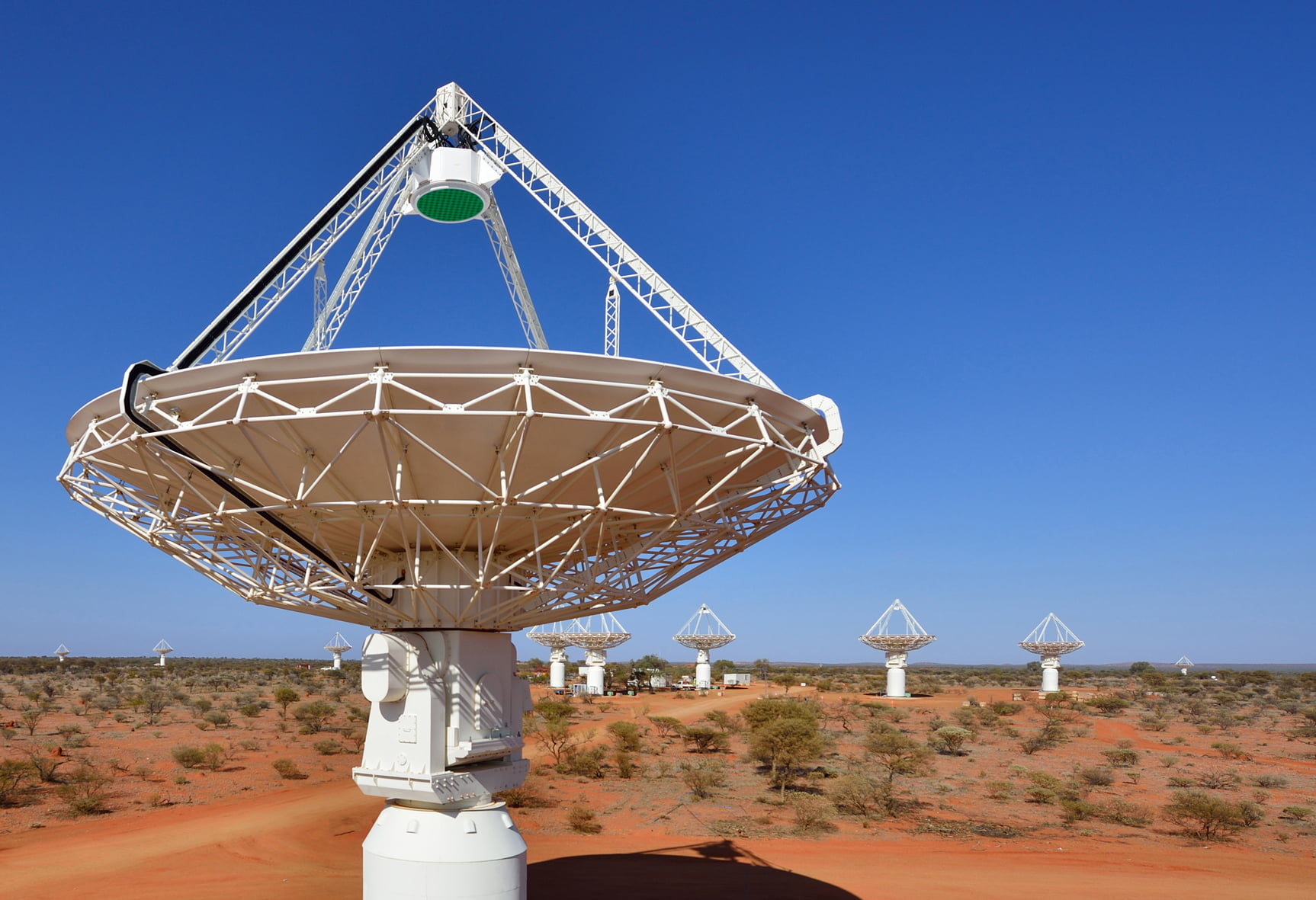Australian Square Kilometre Array Pathfinder: Key Facts
Australian Square Kilometre Array Pathfinder (ASKAP) is a new type of radio telescope developed by Commonwealth Scientific and Industrial Research Organisation (CSIRO). It creates high-resolution images by combining the signals of 36 smaller dish antennas. Recently, this telescope had helped map around 300 million galaxies in approximately 300 hours to create a ‘new atlas of the universe’.
Australian Square Kilometre Array Pathfinder
- The first light of the Australian Square Kilometre Array Pathfinder was in October 2012. The first light in Astronomy means the first use of a telescope.
- The array consists of 36 identical parabolic Antennas. The antennas work together as a single astronomical Inferometer. Each antenna is 12 metre in diameter. The Antennas are spread over a collecting area of 4000 square metres.
- Every antenna is equipped with a phased array feed. A phased array feed creates beam of radio waves that can be electronically guided to points in different direction without moving the Antennas. This increases the field of view of the telescope.
What is an Astronomical Inferometer?
It is an array of separate telescopes that work together as a single telescope to provide higher resolution of images of astronomical objects such as nebulous, stars and galaxies.
Survey science projects of the Australian Square Kilometre Array Pathfinder
Around 75% of the observing time of the telescope was used for large survey science projects. It intended to study the gas evolution and Galaxy formation in the universe. It also aims to study about evolution of magnetic field in the Galaxies and formation of Galaxies.
Evolutionary map of the universe project
The evolutionary map of the universe is a large project of the Australian Square Kilometre Array Pathfinder. The map of the universe is to be created using the telescope to make a Census of radio sources in the sky. By tracing the radio sources the galaxies, black holes and several other Universal bodies can be detected. The project is expected to detect more than 70 million radio sources.
Month: Current Affairs - December, 2020


